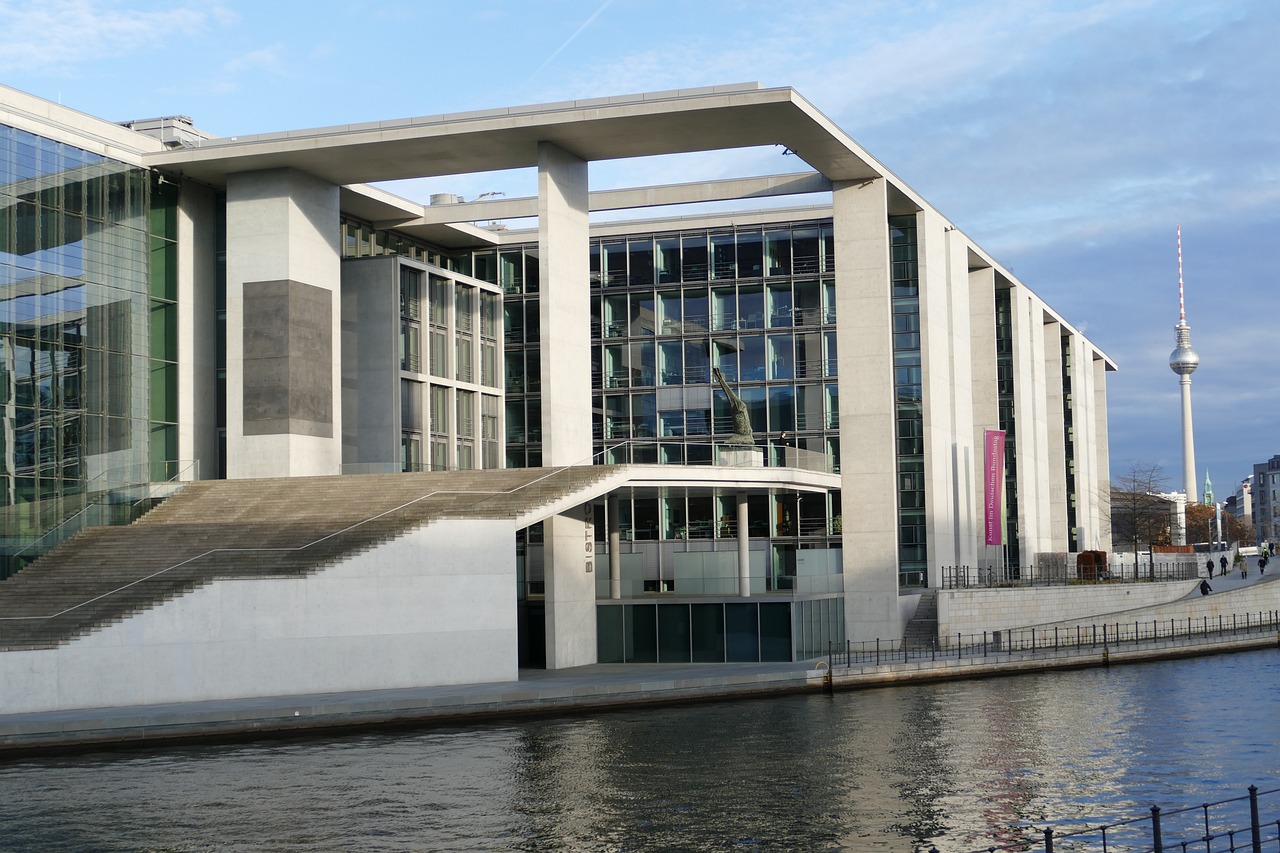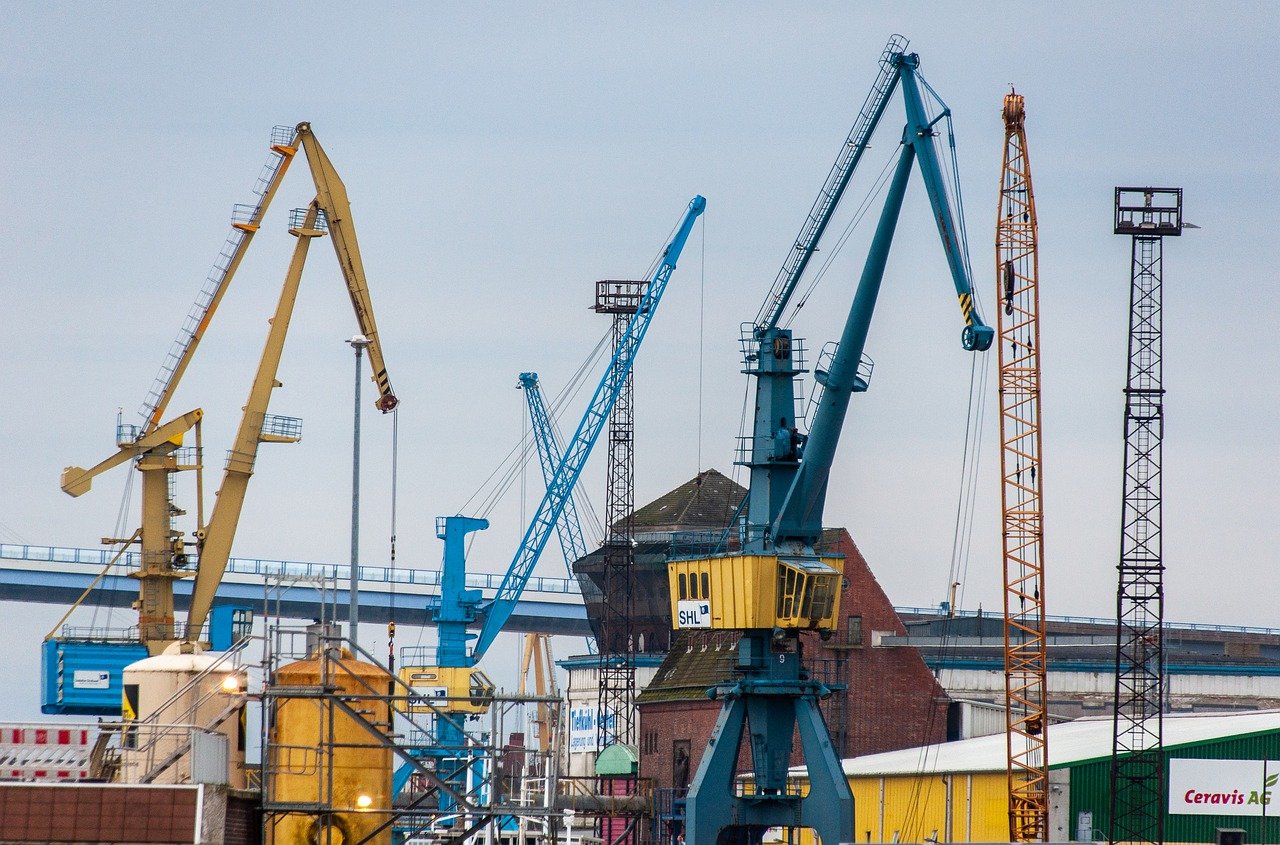How Technology is Reshaping Local Governments
In the ever-evolving landscape of governance, technology is not just a tool; it’s a game changer. Imagine walking into a world where your local government is as accessible as your favorite app, where your voice is heard instantly, and where services are delivered at lightning speed. This is the new reality shaped by technology. Local governments are embracing innovative solutions that not only enhance public service delivery but also foster active citizen engagement and streamline operational efficiency. With the rise of digital platforms, the traditional bureaucratic processes are being replaced by more agile, responsive systems that prioritize the needs of the community. In this article, we will explore the transformative impact of technology on local governments and how it is reshaping the way we interact with our civic institutions.
Digital platforms are revolutionizing how local governments provide services, making them more accessible and efficient. Think about it: no more long lines at city halls or waiting weeks for a permit approval. With just a few clicks, citizens can access a plethora of services online, from applying for licenses to paying taxes. The benefits of implementing digital service delivery systems are immense:
- Accessibility: Services are available 24/7, allowing citizens to interact with their government at their convenience.
- Efficiency: Automation reduces the time taken to process requests, leading to quicker service delivery.
- Cost-Effectiveness: Digital systems can significantly cut operational costs for local governments.
However, the transition to digital service delivery is not without its challenges. Issues such as digital literacy, cybersecurity concerns, and the need for robust infrastructure can hinder progress. Yet, overcoming these hurdles is essential for creating a more connected and efficient local government.
Technology has empowered citizens to engage more actively with their local governments. No longer are citizens passive recipients of services; they are now active participants in the governance process. Various tools have emerged to facilitate communication and participation, allowing residents to voice their opinions and influence decision-making. These tools not only enhance transparency but also build trust between citizens and their government.
Local governments are increasingly using social media to connect with citizens. Platforms like Facebook, Twitter, and Instagram are no longer just for socializing; they have become vital channels for disseminating information and gathering public feedback. Effective strategies for leveraging social media in local governance include:
- Regular Updates: Keeping citizens informed about local events, initiatives, and emergencies.
- Interactive Content: Engaging citizens with polls, surveys, and Q&A sessions.
- Community Building: Fostering a sense of community by highlighting local stories and achievements.
By embracing social media, local governments can create a more inclusive environment where everyone feels heard and valued.
Real-time feedback tools allow citizens to share their opinions instantly. Imagine being able to report a pothole on your street with just a click of a button! These mechanisms improve government responsiveness and accountability, ensuring that issues are addressed promptly. By utilizing mobile apps and online platforms, local governments can gather valuable insights from their constituents, leading to better decision-making and enhanced public trust.
Online town halls provide a platform for direct dialogue between officials and residents. These virtual meetings have proven to be effective in fostering community engagement. They break down geographical barriers, allowing more citizens to participate in discussions about local issues. Whether it’s discussing a new policy or gathering input on community projects, online town halls have become an essential tool for transparency and collaboration.
Data analytics is becoming essential for informed decision-making in local governments. By harnessing the power of data, officials can gain insights into community needs, track the effectiveness of programs, and allocate resources more efficiently. This data-driven approach enhances policy development and ensures that decisions are based on evidence rather than assumptions. As local governments continue to adopt advanced analytical tools, the potential for improved outcomes for residents is immense.
The concept of smart cities integrates technology into urban management. Smart city initiatives aim to enhance the quality of life for residents by improving infrastructure and public services. From smart traffic lights that reduce congestion to waste management systems that optimize collection routes, the possibilities are endless. These initiatives not only make cities more efficient but also contribute to environmental sustainability.
The Internet of Things (IoT) plays a crucial role in urban planning. IoT devices gather data from various sources, allowing local governments to optimize city services and infrastructure. For instance, smart sensors can monitor air quality, traffic flow, and energy usage, providing valuable data that can inform policy decisions. By leveraging IoT technology, cities can become more responsive to the needs of their residents.
Technology is significantly enhancing public safety measures. Local governments are adopting innovative solutions such as surveillance systems and emergency response apps to ensure the safety of their communities. These tools not only help in crime prevention but also improve emergency response times, ultimately saving lives. By investing in public safety innovations, local governments are demonstrating their commitment to protecting their citizens.
Q: How does technology improve public service delivery?
A: Technology streamlines processes, making services more accessible and efficient, which leads to quicker response times and better service overall.
Q: What role does social media play in citizen engagement?
A: Social media allows local governments to communicate with citizens directly, gather feedback, and enhance transparency.
Q: What are smart city initiatives?
A: Smart city initiatives integrate technology to improve urban management, enhance infrastructure, and provide better services to residents.

Digital Service Delivery
In today’s fast-paced world, digital platforms are reshaping the way local governments provide services to their communities. Gone are the days when residents had to stand in long lines or fill out endless paperwork just to access basic services. Now, with just a few clicks, citizens can access information, apply for permits, pay taxes, and even report issues directly from their smartphones or computers. This shift towards not only makes services more accessible but also enhances efficiency and transparency within government operations.
However, implementing digital service delivery systems is not without its challenges. Local governments often face issues such as budget constraints, lack of technical expertise, and concerns about data security. Despite these hurdles, the benefits far outweigh the challenges. For instance, digital platforms can significantly reduce operational costs and improve service speed. Imagine a scenario where a resident can report a pothole through an app, and within hours, the local government receives the notification, dispatches a crew, and resolves the issue—all without the resident ever needing to make a phone call. This is the power of technology at work!
Moreover, the transition to digital services opens up a wealth of opportunities for local governments to engage with their citizens in new and meaningful ways. By leveraging technology, they can gather valuable data about community needs and preferences, allowing for more tailored services. For example, a local government might analyze usage data from their online services to identify which areas need improvement or which services are underutilized. This data-driven approach leads to smarter decision-making and ultimately enhances the quality of life for residents.
To illustrate the impact of digital service delivery, consider the following table that highlights key benefits and challenges:
| Benefits | Challenges |
|---|---|
| Increased accessibility to services | Budget constraints for technology upgrades |
| Improved efficiency and speed of service | Lack of technical expertise among staff |
| Enhanced transparency and accountability | Concerns about data security and privacy |
| Data-driven decision making | Resistance to change from traditional practices |
In conclusion, the adoption of digital service delivery is a game-changer for local governments. It empowers citizens, streamlines operations, and fosters a more engaged community. As technology continues to evolve, it is crucial for local governments to embrace these innovations and overcome the challenges that come with them. The future of public service delivery is undoubtedly digital, and those who adapt will thrive.

Citizen Engagement Tools
In today's fast-paced digital world, technology has become a powerful ally for local governments aiming to foster a more engaged citizenry. Gone are the days when residents had to rely solely on town hall meetings or bulletin boards to voice their concerns or share their ideas. Now, are at the forefront of transforming how communities interact with their local authorities. These tools not only enhance communication but also empower citizens to play an active role in governance. Imagine a world where your voice can be heard instantly, where your feedback can shape policies, and where you can participate in decision-making processes from the comfort of your home. This is the reality that technology is creating.
One of the most significant advancements in citizen engagement is the use of digital communication platforms. Local governments are adopting a variety of tools that facilitate interaction and participation. These include mobile apps, online surveys, and interactive websites that allow for real-time communication. For instance, many municipalities now offer dedicated apps where residents can report issues like potholes or streetlight outages directly to their local government. This not only streamlines the reporting process but also ensures that citizens feel their concerns are being addressed promptly.
Moreover, social media has emerged as a game-changer in local governance. Platforms like Facebook, Twitter, and Instagram are not just for social interactions; they have become essential tools for local governments to connect with their constituents. By sharing updates, announcements, and engaging content, officials can reach a broader audience and foster a sense of community. But how can local governments leverage these platforms effectively? Here are a few strategies that have proven successful:
- Regular Updates: Posting consistently keeps citizens informed about local events, initiatives, and important news.
- Interactive Content: Polls, quizzes, and Q&A sessions can encourage participation and feedback from residents.
- Community Spotlights: Highlighting local achievements or stories can build pride and engagement within the community.
Another innovative approach to citizen engagement is the implementation of real-time feedback mechanisms. These tools allow residents to share their opinions and experiences instantly, creating a dynamic dialogue between citizens and local officials. For example, many cities have adopted platforms where residents can rate services or provide feedback on specific issues. This immediate feedback loop not only enhances government responsiveness but also holds officials accountable for their actions.
Online town halls have also gained popularity as a means of fostering direct dialogue between government officials and residents. These virtual meetings allow citizens to participate in discussions without the constraints of time or location. Imagine being able to ask your mayor a question from the comfort of your living room! Online town halls can cover a range of topics, from budget allocations to community development plans, ensuring that citizens have a voice in critical discussions that affect their lives.
In conclusion, the rise of technology has opened up a plethora of opportunities for local governments to engage with their citizens. By leveraging digital platforms, social media, real-time feedback mechanisms, and online town halls, local authorities can create a more inclusive and participatory governance model. As we continue to embrace these innovative tools, the potential for meaningful citizen engagement will only grow, leading to stronger communities and more effective governance.
Q: How can I participate in online town halls?
A: Most local governments will announce their online town hall meetings through their official websites and social media channels. You can usually join via a link provided in these announcements.
Q: What should I do if I encounter issues with local services?
A: You can report issues using your local government's dedicated app or website, or you can share your concerns via their social media platforms.
Q: Are my comments and feedback taken seriously by local officials?
A: Yes! Many local governments are committed to transparency and accountability, and they utilize feedback to inform their decisions and improve services.

Social Media Integration
In today’s fast-paced world, has become a game-changer for local governments. Imagine being able to connect with your community at the speed of a tweet! Local governments are tapping into platforms like Facebook, Twitter, and Instagram to foster open communication and engage with citizens in ways that were unimaginable just a decade ago. This not only enhances transparency but also builds trust between officials and the community.
One of the most significant advantages of using social media is the ability to disseminate information quickly. Whether it’s an emergency alert, a public service announcement, or an invitation to a community event, local governments can reach thousands of residents in seconds. But it’s not just about broadcasting messages; it’s also about listening. Citizens can voice their concerns, provide feedback, and share ideas, creating a two-way dialogue that strengthens community ties.
However, integrating social media into local governance isn’t without its challenges. Local officials must navigate the complexities of managing online interactions while ensuring that they remain professional and responsive. To do this effectively, many governments are adopting specific strategies:
- Establishing Clear Guidelines: It’s essential for local governments to have a clear social media policy that outlines how they will engage with citizens and what type of content is appropriate.
- Training Staff: Providing training for staff on how to use social media effectively can lead to more engaging and informative interactions.
- Monitoring Engagement: Regularly analyzing engagement metrics helps governments understand what content resonates with their audience and adjust their strategies accordingly.
Moreover, local governments are increasingly using live streaming features on platforms like Facebook and Instagram to host Q&A sessions, share updates, or even broadcast town hall meetings. This real-time interaction allows residents to participate from the comfort of their homes, making governance more accessible than ever. Imagine being able to ask your mayor a question without having to attend a meeting in person!
In conclusion, social media integration is not just a trend; it’s a fundamental shift in how local governments operate. By leveraging these platforms, officials can create a more engaged, informed, and connected community. The future of local governance is bright, and social media is at the heart of this transformation.

Real-Time Feedback Mechanisms
In today's fast-paced world, have emerged as a game-changer for local governments striving to connect with their communities. Imagine a scenario where a citizen can instantly voice their concerns about a pothole on their street or report a malfunctioning streetlight with just a few taps on their smartphone. This is not just a dream; it's the reality brought forth by technology. By implementing these mechanisms, local governments can foster a culture of transparency and responsiveness, which are critical for building trust with the community.
One of the most significant advantages of real-time feedback tools is their ability to provide immediate insights into public sentiment. By utilizing mobile apps, social media platforms, and dedicated feedback portals, local governments can gather opinions and suggestions from citizens at any time. This immediacy allows officials to address issues promptly, ensuring that problems do not fester and escalate. For instance, when a local government receives a surge of complaints about public transportation delays, they can quickly investigate and implement solutions, demonstrating their commitment to the community.
However, the implementation of real-time feedback mechanisms is not without its challenges. Local governments must ensure that they have the proper infrastructure in place to handle the influx of data and feedback they receive. This includes investing in data analytics tools that can sift through vast amounts of information to identify trends and urgent issues. Moreover, officials must be prepared to engage with the feedback constructively. Simply collecting data is not enough; local governments need to communicate back to the citizens about how their input is being used, creating a feedback loop that enhances trust and participation.
To illustrate the effectiveness of these mechanisms, consider the following table that outlines some popular real-time feedback tools and their key features:
| Feedback Tool | Key Features | Benefits |
|---|---|---|
| Mobile Apps | Instant reporting, GPS tracking, user-friendly interface | Convenience, accessibility, and immediate issue reporting |
| Social Media Platforms | Real-time interaction, broad reach, community engagement | Increased visibility, rapid response, and community building |
| Dedicated Feedback Portals | Structured feedback forms, data analytics, tracking responses | Organized data collection, trend identification, and accountability |
In conclusion, real-time feedback mechanisms are not merely technological innovations; they represent a fundamental shift in how local governments engage with their constituents. By leveraging these tools, local officials can create a more inclusive and responsive governance model. The journey towards effective community engagement is ongoing, but with the right tools and commitment, local governments can pave the way for a brighter, more connected future.
- What are real-time feedback mechanisms?
Real-time feedback mechanisms are tools and platforms that allow citizens to provide immediate input on local government services and issues, enabling quicker responses and improvements.
- How do these mechanisms improve government responsiveness?
By allowing citizens to report issues instantly, local governments can address problems more efficiently, leading to improved public services and increased trust.
- What challenges do local governments face in implementing these tools?
Challenges include ensuring proper data management, engaging constructively with feedback, and maintaining transparency in how citizen input is utilized.

Online Town Halls
In the digital age, have emerged as a revolutionary platform for fostering communication between local governments and their constituents. Imagine being able to participate in a community meeting without the hassle of traffic, parking, or scheduling conflicts. This is precisely what online town halls offer—a convenient and accessible way for residents to voice their opinions, ask questions, and engage with their local leaders. These virtual meetings break down geographical barriers, allowing a diverse range of voices to be heard, which is essential for a thriving democracy.
One of the most significant advantages of online town halls is their ability to increase participation. Traditional town halls often see low attendance due to various reasons, such as time constraints or physical accessibility. However, when meetings are held online, they can attract a broader audience. Residents can join from the comfort of their homes, making it easier for busy parents, working professionals, and even those with mobility issues to participate. This inclusivity not only enriches the discussion but also ensures that local leaders are addressing the needs and concerns of all community members.
Moreover, online town halls can be recorded and archived for future reference, allowing those who couldn't attend the live event to catch up later. This feature promotes transparency, as residents can review what was discussed and hold their officials accountable. Additionally, many platforms allow for real-time interaction through chat functions, enabling participants to submit questions and comments during the meeting. This instant feedback loop fosters a sense of community and shared responsibility in governance.
However, while the benefits are clear, there are also challenges that local governments must navigate when implementing online town halls. Issues such as digital divide—where some residents may lack access to reliable internet or technology—can hinder participation. Local governments need to consider these disparities and work towards providing solutions, such as offering public internet access or technical assistance. Furthermore, ensuring that the online platform is user-friendly is crucial. If the technology is too complicated, it may discourage participation rather than encourage it.
To maximize the effectiveness of online town halls, local governments can adopt several strategies:
- Promote Participation: Use social media and email newsletters to inform residents about upcoming meetings.
- Engage with Feedback: Actively encourage participants to share their thoughts before and after the meeting.
- Follow-Up: Send out summaries or key takeaways from the meeting to keep the conversation going.
In conclusion, online town halls represent a significant step forward in the evolution of local governance. By embracing technology, local governments can enhance engagement, foster transparency, and create a more inclusive environment for civic participation. As we continue to navigate this digital landscape, it's essential to address the challenges that come with it, ensuring that every voice in the community has the opportunity to be heard.
- What is an online town hall? An online town hall is a virtual meeting where local government officials engage with residents to discuss community issues, gather feedback, and answer questions.
- How can I participate in an online town hall? Residents can typically participate by registering for the event through the local government's website and joining via a provided link.
- Are online town halls recorded? Yes, many online town halls are recorded and made available for those who could not attend the live session.
- What if I don’t have internet access? Local governments may provide resources such as public Wi-Fi or alternative ways to engage, so it's best to check with your local office.

Data-Driven Decision Making
In today's fast-paced world, the ability to make informed decisions is more critical than ever, especially for local governments. The integration of data analytics into governance processes is revolutionizing how officials approach policy development and resource allocation. By leveraging vast amounts of data, local governments can identify trends, understand community needs, and allocate resources more effectively. Imagine a city where decisions are not based on guesswork but on concrete evidence—this is the power of data-driven decision making.
One of the most significant advantages of adopting a data-driven approach is the enhancement of transparency and accountability. When data is collected and analyzed, it provides a clear picture of how resources are being utilized and the outcomes of various initiatives. For instance, if a local government implements a new public transportation route, data can show whether it meets the community's needs or if adjustments are necessary. This not only helps in making the right choices but also builds trust with the citizens, who can see that their government is making decisions based on factual information rather than assumptions.
Moreover, data-driven decision making allows for a more proactive approach to governance. Instead of reacting to issues as they arise, local governments can use predictive analytics to foresee potential problems and address them before they escalate. For example, by analyzing traffic patterns and accident reports, a city can identify high-risk areas and implement safety measures, such as improved signage or traffic lights, thereby preventing accidents before they happen.
However, the journey towards effective data-driven decision making is not without its challenges. Local governments often face obstacles such as data silos, where information is trapped within different departments and not shared effectively. This can lead to a fragmented understanding of community needs. Additionally, the sheer volume of data can be overwhelming, necessitating the use of sophisticated tools and trained personnel to analyze and interpret the information accurately.
To illustrate the impact of data-driven decision making, consider the following table that highlights key benefits and challenges faced by local governments:
| Benefits | Challenges |
|---|---|
| Informed policy development | Data silos and lack of integration |
| Improved resource allocation | Overwhelming volume of data |
| Enhanced transparency and accountability | Need for training and expertise |
| Proactive problem-solving | Data privacy concerns |
Local governments are increasingly recognizing the importance of data in shaping their strategies and improving public services. By investing in data analytics tools and fostering a culture of data sharing across departments, they can unlock the full potential of their data. As more cities embrace this approach, we can expect to see a transformation in how local governance operates, ultimately leading to better services for citizens and a more responsive government.
As we move forward, the question remains: how can local governments continue to innovate and adapt in this data-driven era? The answer lies in collaboration, technology adoption, and a commitment to serving the public with transparency and accountability. In this way, data-driven decision making will not only enhance operational efficiency but also create a stronger bond between local governments and the communities they serve.
- What is data-driven decision making?
Data-driven decision making refers to the process of using data analysis to inform and guide policy and operational decisions in local governments.
- How can data improve local governance?
Data can enhance transparency, accountability, and resource allocation, allowing local governments to make informed choices that better serve their communities.
- What challenges do local governments face in implementing data-driven strategies?
Challenges include data silos, the overwhelming volume of information, and the need for trained personnel to analyze and interpret data accurately.
- Why is transparency important in local governance?
Transparency builds trust between citizens and their government, ensuring that decisions are made based on factual information rather than assumptions.

Smart City Initiatives
The concept of smart cities is more than just a buzzword; it’s a transformative approach to urban living that integrates technology into the very fabric of city management. Imagine a city where traffic flows smoothly, public services are just a click away, and energy consumption is optimized for sustainability. This vision is becoming a reality as local governments embrace innovative technologies to enhance the quality of life for residents. In this section, we’ll explore the various smart city initiatives that are reshaping urban landscapes.
At the heart of smart city initiatives is the use of Internet of Things (IoT) devices. These devices collect and analyze data in real-time, allowing city planners to make informed decisions. For instance, smart traffic lights can adapt to real-time traffic conditions, reducing congestion and improving commute times. Additionally, smart waste management systems notify sanitation departments when bins are full, optimizing collection routes and saving resources. The integration of IoT in urban planning is not just about efficiency; it’s about creating a more responsive and livable environment.
Another critical aspect of smart city initiatives is the enhancement of public safety. Local governments are leveraging technology to improve safety measures through innovative solutions. For example, cities are deploying advanced surveillance systems equipped with artificial intelligence that can detect unusual behavior and alert law enforcement in real-time. Furthermore, emergency response apps allow residents to report incidents instantly, ensuring that help is dispatched quickly. These advancements not only protect citizens but also foster a sense of security within the community.
Moreover, smart city initiatives often focus on sustainability. Many local governments are implementing smart energy solutions that monitor and manage energy usage across the city. Smart grids allow for better distribution of electricity, reducing waste and lowering costs. Solar panels and energy-efficient streetlights equipped with sensors are also becoming common, contributing to a greener urban environment. By prioritizing sustainability, local governments are not only enhancing the quality of life for residents but also setting an example for future generations.
To illustrate the impact of these initiatives, let’s take a look at a few successful smart city projects:
| City | Initiative | Impact |
|---|---|---|
| Barcelona | Smart Water Management | Reduced water waste by 25% |
| Singapore | Smart Traffic Management | Decreased traffic congestion by 20% |
| Amsterdam | Smart Energy Grids | Increased renewable energy usage by 30% |
In conclusion, smart city initiatives are not just about technology for technology's sake. They represent a holistic approach to urban management that prioritizes efficiency, safety, and sustainability. As local governments continue to explore these initiatives, we can expect to see cities that are not only smarter but also more connected and resilient. The future of urban living is bright, and it’s powered by technology that puts citizens at the forefront.
- What is a smart city? A smart city uses technology and data to enhance the quality of life for its residents, improve urban services, and promote sustainability.
- How do IoT devices contribute to smart cities? IoT devices collect real-time data that helps city planners optimize services like traffic management, waste collection, and energy use.
- What are the benefits of smart city initiatives? Benefits include improved public safety, reduced congestion, enhanced service delivery, and greater sustainability.
- Can smart city initiatives help with environmental issues? Yes, many initiatives focus on sustainability, reducing energy consumption, and promoting renewable energy sources.

IoT in Urban Planning
The Internet of Things (IoT) is not just a buzzword; it's a game changer in urban planning. Imagine a city where every streetlight, traffic signal, and public park bench is connected to the internet, sharing valuable data that can be used to enhance the urban experience. This interconnectedness allows local governments to collect real-time data on everything from traffic patterns to air quality, creating a more responsive and efficient urban environment. By utilizing IoT devices, city planners can make informed decisions that directly impact the quality of life for residents.
For instance, consider how smart traffic lights can adapt to real-time traffic conditions. Instead of operating on a fixed schedule, these lights can analyze traffic flow and adjust their timings accordingly. This not only reduces congestion but also lowers emissions, contributing to a cleaner environment. The use of sensors in public transportation can provide commuters with up-to-the-minute information on bus and train arrivals, making public transit a more attractive option. The integration of IoT in urban planning is akin to giving cities a brain, enabling them to think and respond to the needs of their inhabitants.
Moreover, the data collected from IoT devices can be invaluable for long-term urban planning strategies. By analyzing trends over time, local governments can identify areas that require infrastructure improvements or additional resources. For example, if data shows that certain neighborhoods experience higher foot traffic, city planners can prioritize those areas for new parks, sidewalks, or other community amenities. This proactive approach not only enhances urban living but also fosters a sense of community among residents.
However, implementing IoT in urban planning is not without its challenges. Issues such as data privacy, cybersecurity, and the digital divide must be addressed to ensure that all citizens benefit from these advancements. Local governments must work diligently to establish regulations and frameworks that protect citizen data while promoting transparency and trust. The journey towards a smart city is a collaborative effort, requiring input from various stakeholders, including residents, technology providers, and urban planners.
In conclusion, the integration of IoT in urban planning represents a significant leap forward in how local governments can manage their cities. By harnessing the power of data and technology, cities can become more efficient, responsive, and ultimately, more livable. As we move towards a future where smart cities are the norm, it’s essential for local governments to embrace these innovations and lead the charge in creating sustainable urban environments for generations to come.
- What is IoT? The Internet of Things (IoT) refers to the interconnected network of devices that communicate and exchange data over the internet.
- How does IoT improve urban planning? IoT provides real-time data that helps city planners make informed decisions, optimize resources, and enhance the overall quality of life for residents.
- What are some challenges of implementing IoT in cities? Key challenges include data privacy concerns, cybersecurity risks, and ensuring equitable access to technology for all citizens.
- Can IoT help reduce traffic congestion? Yes, smart traffic systems powered by IoT can adapt to real-time conditions, thereby reducing congestion and improving traffic flow.

Public Safety Innovations
In today's fast-paced world, public safety has taken on a new dimension, thanks to the integration of technology. Local governments are now leveraging innovative solutions to enhance the safety and security of their communities. Imagine a city where emergency services can respond to incidents in real-time, where surveillance systems are not just a watchful eye but an intelligent network that helps prevent crime before it happens. This is not science fiction; it's the reality of public safety innovations reshaping our local landscapes.
One of the most significant advancements in public safety is the use of surveillance systems. These systems have evolved from basic cameras to sophisticated networks equipped with artificial intelligence (AI) capabilities. For instance, AI can analyze video feeds to detect unusual behavior, alerting authorities before a situation escalates. This proactive approach not only enhances the safety of citizens but also optimizes the use of law enforcement resources. Local governments are increasingly investing in these technologies, recognizing that a well-monitored environment can deter crime and provide peace of mind for residents.
Moreover, emergency response apps are becoming indispensable tools for local governments. These apps empower citizens to report incidents, request assistance, and receive real-time updates on emergencies. For example, during natural disasters, these applications can provide critical information about evacuation routes, shelter locations, and safety tips. The ability to communicate swiftly and efficiently during a crisis can mean the difference between life and death. Local governments are not just adopting these technologies; they are actively promoting their use to ensure that every citizen is equipped to contribute to their community's safety.
However, as we embrace these innovations, it's essential to consider the ethical implications and privacy concerns that come with advanced surveillance and data collection. Striking a balance between safety and privacy is crucial. Local governments must implement transparent policies that outline how data is collected, used, and protected. Engaging the community in these discussions fosters trust and ensures that technological advancements serve the public interest without infringing on individual rights.
To illustrate the impact of these innovations, let’s take a look at a few key statistics:
| Innovation | Impact |
|---|---|
| AI Surveillance Systems | 30% reduction in crime rates in monitored areas |
| Emergency Response Apps | 50% faster response times reported |
| Community Engagement Platforms | Increased citizen reporting by 40% |
In conclusion, public safety innovations are not just about technology; they are about creating safer communities through smart, data-driven approaches. As local governments continue to explore and implement these solutions, the focus should remain on enhancing the quality of life for residents while ensuring their privacy and security. The future of public safety lies in collaboration between technology and the community, fostering an environment where everyone feels secure and involved.
Q: How do surveillance systems improve public safety?
A: Surveillance systems equipped with AI can detect unusual behavior and alert authorities, helping to prevent crime before it escalates.
Q: What role do emergency response apps play?
A: These apps allow citizens to report incidents and receive real-time updates during emergencies, significantly improving response times.
Q: Are there privacy concerns with public safety technologies?
A: Yes, local governments must balance safety and privacy by implementing transparent policies on data collection and usage.
Q: How can citizens get involved in public safety initiatives?
A: Citizens can engage with local governments through community forums, use safety apps, and participate in discussions about public safety policies.
Frequently Asked Questions
- How is technology improving service delivery in local governments?
Technology is streamlining service delivery by allowing local governments to implement digital platforms that make access to services faster and easier. Citizens can now apply for permits, pay fines, and access information online, reducing wait times and increasing efficiency.
- What are citizen engagement tools and how do they work?
Citizen engagement tools are digital platforms that facilitate communication between local governments and residents. These tools include social media, online surveys, and community forums that encourage public participation in governance, making it easier for citizens to voice their opinions and contribute to decision-making.
- How can social media be effectively used by local governments?
Local governments can use social media to share updates, gather feedback, and engage with citizens in real-time. By creating informative and interactive content, they can foster a sense of community and keep residents informed about important issues and events.
- What are real-time feedback mechanisms?
Real-time feedback mechanisms allow citizens to provide instant feedback on services and policies. This could be through mobile apps or online platforms where residents can report issues, suggest improvements, or express concerns, helping governments respond more quickly and effectively.
- What is an online town hall and its benefits?
An online town hall is a virtual meeting where government officials and residents can interact directly. These meetings break down geographical barriers, allowing more citizens to participate and voice their concerns, thereby enhancing community engagement and transparency.
- How does data-driven decision-making benefit local governments?
Data-driven decision-making enables local governments to analyze trends and make informed choices regarding policy and resource allocation. By leveraging data analytics, they can identify community needs, optimize services, and allocate funds more effectively.
- What are smart city initiatives?
Smart city initiatives integrate technology into urban management to improve infrastructure and enhance the quality of life for residents. These initiatives may include smart traffic systems, energy-efficient buildings, and enhanced public transportation options, all aimed at creating more sustainable and livable cities.
- How does the Internet of Things (IoT) contribute to urban planning?
The Internet of Things (IoT) involves using interconnected devices to gather data on various urban elements. This data helps local governments optimize city services, such as waste management and public transportation, ultimately leading to better urban planning and resource management.
- What innovations are being used to enhance public safety?
Local governments are adopting various technologies to improve public safety, including advanced surveillance systems, emergency response apps, and predictive policing tools. These innovations help ensure faster response times and more effective resource allocation during emergencies.



















